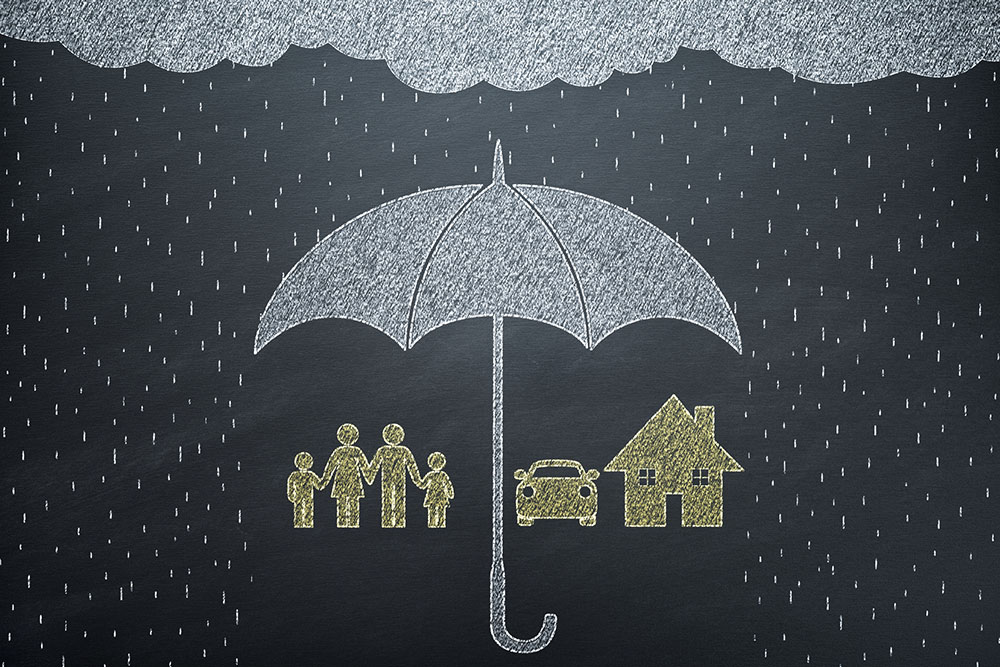Four forgotten areas in divorce & financial planning
This content is for information purposes only and should not be taken as financial advice. Every effort has been made to ensure the information is correct and up-to-date at the time of writing. For personalised and regulated advice regarding your situation, please consult an independent financial adviser here at Castlegate in Grantham, Lincolnshire or other local offices.
Divorce is widely regarded as the second-most stressful life event after the death of a spouse and marital separation (according to the Holmes and Rahe stress scale). The UK recently introduced “no-fault divorce” into the English legal system – taking some of the stress out of the “blame game”. However, the process is often still painful and complicated.
Naturally, this can lead to costly mistakes in the divorce process, especially regarding financial planning. Below, our Grantham financial advisers identify four commonly forgotten areas of financial planning during divorce and how to address them.
To discuss your own financial plan with us, please get in touch to arrange a no-obligation financial consultation at our expense:
01476 855 585
info@casfin.co.uk
#1 Credit issues
When two individuals enter a joint financial arrangement, such as a joint bank account, their credit files become linked. If not carefully managed, this can create problems for both parties later in a divorce.
Suppose one spouse was responsible for paying all household bills during the marriage. This could result in the other spouse having little or no credit history after a divorce, making it difficult to secure basic services (e.g., a mobile phone contract).
Alternatively, if one person has been irresponsible with the joint finances, it can affect the other spouse’s credit rating—even if the latter has made good financial decisions. This could lead to restricted access to favourable interest rates (e.g., on a new mortgage).
To fully control your credit, consider asking for a notice of disassociation from credit reference agencies. This is only possible after all joint accounts are closed. Moreover, any joint mortgages must be ended—for instance, by selling the family home or transferring ownership to one person.
#2 Protection
If you took out life insurance, critical illness cover, income protection, private medical insurance (PMI) or another form of financial protection during your marriage, it may be time to review these policies.
During a separation or divorce, these cannot be “split”, and the cover may no longer suit your needs. Issues can also arise if one person stops paying the premiums during the divorce process – resulting in providers refusing a claim if the worst suddenly happens.
Another scenario could be that one spouse removes another from the policy. Or, the policy is allowed to lapse. Even if these scenarios do not transpire, important details will likely require updating (e.g. beneficiaries of any payouts) to reflect your new situation.
To avoid these problems, you may need to set up fresh individual plans during/after your divorce. Consider getting financial advice, as your financial position will likely change and face uncertainty at this time – making it difficult to discern the cover you need on your own.
#3 Pensions
It is easy to forget about pensions during divorce (indeed, 70% of couples do). The funds are inaccessible until retirement, and the assets are intangible compared to the family home (which you can see and touch).
However, forgetting pensions means individuals miss out on between £2 billion and £4 billion in savings each year. There are three main options for dealing with pensions during divorce:
- Pensions offsetting. The value of the pension(s) is offset against other assets, such as home equity and ISA savings.
- Pensions sharing. Person A’s pension savings are transferred to Person B, in whole or in part.
- Pension attachment/earmarking orders. When Person A receives their pension income, they will pay some of it to Person B (their former spouse).
The suitability of these options depends on your specific goals, circumstances and priorities. Some people want a “clean break” after their divorce, making the last option unappealing. Others may find pension attachment preferable since they can continue managing their investments until retirement.
#4 Financial separation
The end of a marriage does not necessarily mean that the ex-spouses are now completely financially independent. For instance, they might have agreed between themselves on how to split the assets. However, this is not legally binding. One person could still bring a financial claim against the other.
The only way to protect yourself in this respect is to obtain a financial consent order from the courts. This spells out, in legally binding language, what happens to your property, pensions and other assets when you divorce. It confirms in writing what you have agreed in private.
A consent order can offer additional financial protection since it can specify provisions for regular payments – e.g. child maintenance for a spouse who will assume primary care for the children.
Some splitting couples may seek a “clean break” consent order, which completely separates financial ties. This may be suitable for a young divorcing couple who did not have time to build up joint assets and liabilities. The clean break can also be deferred to a later date, if required.
Invitation
If you are interested in discussing your own financial plan or investment strategy with us, please get in touch to arrange a no-commitment financial consultation at our expense:
01476 855 585
info@casfin.co.uk

Heather Hodson
Chartered Financial Planner
Heather joined Castlegate in 2004 and is one of the firm’s longest serving Financial Planners.
Email: Heather.Hodson@casfin.co.uk












